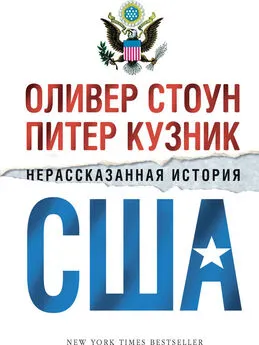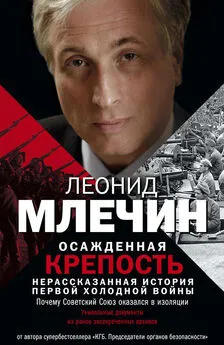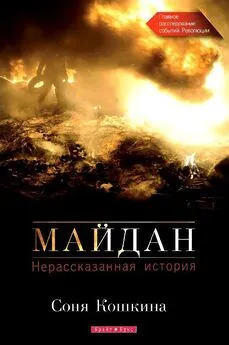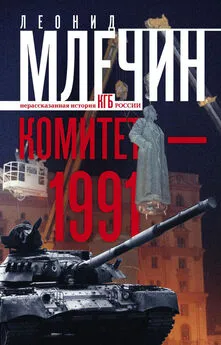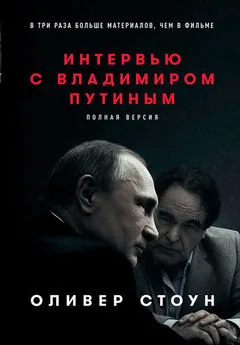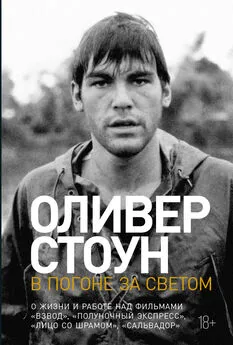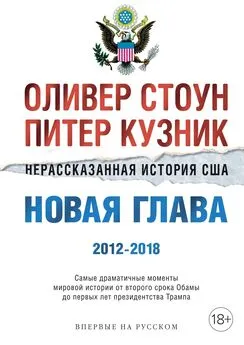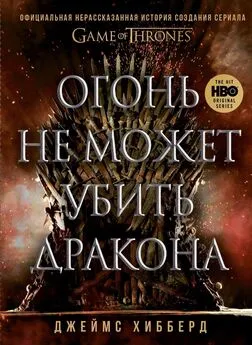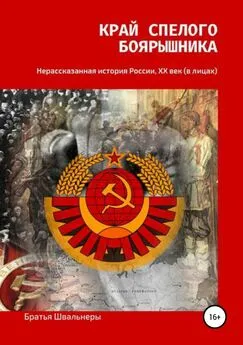Оливер Стоун - Нерассказанная история США
- Название:Нерассказанная история США
- Автор:
- Жанр:
- Издательство:Array Литагент «Аттикус»
- Год:2014
- Город:М.
- ISBN:978-5-389-08903-7
- Рейтинг:
- Избранное:Добавить в избранное
-
Отзывы:
-
Ваша оценка:
Оливер Стоун - Нерассказанная история США краткое содержание
Почему наша страна размещает во всех уголках земного шара свои военные базы, общее количество которых, по некоторым подсчетам, перевалило за тысячу? Почему США тратят на свои вооруженные силы больше денег, чем все остальные страны, вместе взятые? Почему наше государство по-прежнему содержит огромный арсенал ядерного оружия, большая часть которого находится в постоянной боевой готовности, хотя, по сути, ни одна страна сегодня не представляет для нас непосредственной угрозы?
Почему ничтожному меньшинству состоятельных американцев позволено оказывать такое мощное влияние на внутреннюю и внешнюю политику США и СМИ, в то время как широкие народные массы страдают от снижения уровня жизни, а их голос в политике слышен все слабее? Почему американцы вынуждены мириться с постоянным надзором, вмешательством государства в их личные дела, попранием гражданских свобод и утратой права на частную жизнь?
Это повергло бы в ужас отцов-основателей и прежние поколения американцев. Почему в нашей стране именно те, кем движет жадность и узколобый эгоизм, правят теми, кто ратует за такие общественные ценности, как доброта, щедрость, сочувствие к окружающим, общность интересов и верность общенародным идеалам?
И это лишь малая толика тех вопросов, которые мы зададим на страницах этой книги. И хотя мы не надеемся, что сумеем найти ответы на все из них, мы все же постараемся представить исторические факты так, чтобы читатели смогли самостоятельно углубиться в изучение заинтересовавших их вопросов.
В истории Американской империи мало хорошего. Но необходимо честно и открыто говорить о ней, если мы хотим, чтобы Соединенные Штаты когда-нибудь отважились пойти на коренные реформы, которые позволят им играть ведущую роль в продвижении человечества вперед, вместо того чтобы всячески тормозить его прогресс.
Оливер Стоун, Питер Кузник Буктрейлер к этой книге
Нерассказанная история США - читать онлайн бесплатно ознакомительный отрывок
Интервал:
Закладка:
48. Sulzberger C. L. U. S. Prestige Ebbs on Korea, Europe-Asia Survey Shows // New York Times. – 1950. – December 7.
49. Cumings Bruce. The Korean War: A History. – NY: Modern Library, 2010. – P. 156.
50. Offner Arnold A. Another Such Victory: President Truman and the Cold War, 1945–1953. – Stanford, CA: Stanford University Press, 2002. – P. 402.
51. Hastings Max. The Korean War. – NY: Simon & Schuster, 1987. – P. 201.
52. Cumings Bruce. The Origins of the Korean War, vol. 2: The Roaring of the Cataract, 1947–1950. – Princeton, NJ: Princeton University Press, 1990. – P. 750–751.
53. Halberstam David. The Coldest Winter: America and the Korean War. – NY: Hyperion, 2007. – P. 607.
54. McCarthy Charges Treason with Bourbon // Los Angeles Times. – 1951.—April 13.
55. Richard H. Rovere and Arthur Schlesinger, Jr., General MacArthur and President Truman: The Struggle for Control of American Foreign Policy (1951; reprint, New Brunswick, NJ: Transaction Publishers, 1992), 276–277.
56. Halberstam David. The Coldest Winter: America and the Korean War. – NY: Hyperion, 2007. – P. 609.
57. Beisner Robert L. Dean Acheson: A Life in the Cold War. – NY: Oxford University Press, 2006. – P. 432.
58. Beisner Robert L. Dean Acheson: A Life in the Cold War. – NY: Oxford University Press, 2006. – P. 433, 446.
59. Barrett George. Radio Hams in U. S. Discuss Girls, So Shelling of Seoul Is Held Up // New York Times. – 1951. – February 9.
60. Stone I. F. The Hidden History of the Korean War. – NY: Monthly Review Press, 1969. – P. 313.
61. Bruce Cumings, American Airpower and Nuclear Strategy in Northeast Asia Since 1945 // in War and State Terrorism: The United States, Japan, and the Asia-Pacific in the Long Twentieth Century, ed. Mark Selden and Alvin Y. So (Lanham, MD: Rowman & Littlefield, 2004), 76.
62. Cumings Bruce // Dominion from Sea to Sea: Pacific Ascendancy and American Power. – New Haven, CT: Yale University Press, 2009. – P. 340–341.
63. Gaddis John Lewis. Russia, The Soviet Union, and the United States: An Interpretive History. – NY: Alfred A. Knopf, 1978. – P. 212.
64. Thomas C. Reeves, The Life and Times of Joe McCarthy (1982; reprint, Lanham, MD: Madison Books, 1997), 451.
65. Ibid., 436.
66. Ambrose Stephen E. Eisenhower: The President, vol. 2. – NY: Simon & Schuster, 1984. – P. 55.
67. Shaffer Samuel. Behind Nixon’s Speech // Newsweek. – 1952. – October 6. – 25 p.
68. Ambrose Stephen E. Eisenhower: Soldier and President. – NY: Simon & Schuster, 1990. – P. 218.
69. Dwight D. Eisenhower, The Long Pull for Peace: Extracts from the Final Report of the Chief of Staff General of the Army Dwight D. Eisenhower // The Army Information Digest, April 1948, 41.
70. Chernus Ira. Apocalypse Management: Eisenhower and the Discourse of National Security. – Stanford, CA: Stanford University Press, 2008. – P. 30–31.
71. LaFeber Walter. America, Russia, and the Cold War, 1945–2006. – B: McGrawHill, 2008. – P. 147.
72. Leffler Melvyn P. For the Soul of Mankind: The United States, the Soviet Union and the Cold War. – NY: Hill and Wang, 2007. – P. 104.
73. Larres Klaus. Churchill’s Cold War: The Politics of Personal Diplomacy. – New Haven, CT: Yale University Press, 2002. – P. 189–193.
74. Text of Speech by Eisenhower Outlining Proposals for Peace in World // New York Times. – 1953. – April 17.
75. Highway of Peace // New York Times. – 1953. – April 17. – P. 24.
76. Eisenhower’s Peace Program // Washington Post. – 1953. – April 17. – P. 26.
77. Lloyd Gardner, Poisoned Apples: John Foster Dulles and the ‘Peace Offensive’ // The Cold War After Stalin’s Death, ed. Klaus Larres and Kenneth Osgood (Lanham, MD: Rowman & Littlefield, 2006), 85.
78. Schlesinger Arthur M. Jr. The Cycles of American History. – B: Houghton Mifflin, 1999. – P. 399.
79. Haldeman H. R., DiMona Joseph. The Ends of Power. – NY: Dell, 1978. – P. 121–122. Nixon Richard. The Real War. – NY: Simon & Schuster, 1990. – P. 255.
80. Halliday Jon, Cumings Bruce. Korea: The Unknown War. – NY: Penguin, 1990.– P. 203.
81. Halliday Jon, Cumings Bruce. Korea: The Unknown War. – NY: Penguin, 1990.– P. 204.
82. Dwight MacDonald, America! America! // 50 Years of Dissent, ed. Nicolaus Mills and Michael Walzer (New Haven, CT: Yale University Press, 2004), 50.
83. McMillan Priscilla J. The Ruin of J. Robert Oppenheimer and the Birth of the Modern Arms Race. – NY: Viking, 2005. – P. 142.
84. DeGroot Gerard J. The Bomb: A Life. – Cambridge, MA: Harvard University Press, 2005. – P. 179.
85. Text of Eisenhower Inaugural Address Pledging Search for Peace // New York Times. – 1953. – January 21.
86. Snow Edgar. Journey to the Beginning. – NY: Random House, 1958. – P. 360–361.
87. Ike Scouts Bomb as Full Defense // Baltimore Sun. – 1947. – February 25.
88. Rosenberg David Alan. The Origins of Overkill: Nuclear Weapons and American Strategy 1945–1960 // International Security. – № 7. – Spring 1983. – P. 27.
89. Kuznick Peter J. Prophets of Doom or Voices of Sanity? The Evolving Discourse of Annihilation in the First Decade and a Half of the Nuclear Age // Journal of Genocide Research. – № 9. – 2007. – P. 424.
90. The Central Problem // New York Times. – 1953. – September 19.
91. Immerman Richard H. Empire for Liberty: A History of American Imperialism from Benjamin Franklin to Paul Wolfowitz. – Princeton, NJ: Princeton University Press, 2010. – P. 164–172.
92. Pruessen Ronald W. John Foster Dulles: The Road to Power. – NY: Free Press, 1982. – P. 123–132.
93. Kinzer Stephen. Overthrow: America’s Century of Regime Change from Hawaii to Iraq. – NY: Times Books, 2006. – P. 114.
94. Adams Sherman. Firsthand Report: The Story of the Eisenhower Administration. – Westport, CT: Greenwood Press, 1974. – 364.
95. Prados John. The Sky Would Fall: Operation Vulture: The U. S. Bombing Mission in Indochina, 1954. – NY: Dial Press, 1983. – P. 30.
96. Memorandum of Discussion at a Special Meeting of the National Security Council on Tuesday, March 31, 1953, Foreign Relations of the United States, 1952–1954: Korea, vol. 15 (Washington, DC: U. S. Government Printing Office, 1984), 827.
97. Soman Appu K. Double-edged Sword: Nuclear Diplomacy in Unequal Conflicts: The United States and China, 1950–1958. – NY: Praeger, 2000). – P. 88.
98. Fred Kaplan, The Wizards of Armageddon (1983; reprint, Stanford, CA: Stanford University Press, 1991), 183–184.
99. Schlesinger Arthur M. Jr. The Cycles of American History. – B: Houghton Mifflin, 1999. – P. 401.
100. Chernus Ira. Apocalypse Management: Eisenhower and the Discourse of National Security. – Stanford, CA: Stanford University Press, 2008. – P. 96.
101. Folliard Edward T. U.S. to Use A-Weapons in Any War // Washington Post. – 1955. – March 17; President Says Atom Bomb Would Be Used like ‘Bullet’ // New York Times. – 1955. – March 17.
102. Record Shows U. S. Stands Ready to Use Its Nuclear Weapons Against Aggressor // New York Times. – 1956. – January 2.
103. Chernus Ira. Apocalypse Management: Eisenhower and the Discourse of National Security. – Stanford, CA: Stanford University Press, 2008. – P. 78–79.
104. Lanouette William. Looking Back: Civilian Control of Nuclear Weapons // Arms Control Today. – 2009. – № 5. – P. 45.
105. Text of Eisenhower’s Address to the U. N. Assembly // New York Times. – 1953. – December 9.
106. Baldwin Hanson W. Eisenhower’s Bid Hailed // New York Times. – 1953. – December 10.
107. Maddock Shane J. Nuclear Apartheid: The Quest for American Atomic Supremacy from World War II to the Present. – Chapel Hill: University of North Carolina Press, 2010. – P. 91.
108. Holloway David. Stalin and the Bomb: The Soviet Union and Atomic Energy, 1939–1956. – New Haven, CT: Yale University Press, 1994. – P. 349–350.
109. John Foster Dulles, “The Evolution of Foreign Policy”, Department of State Bulletin 30, no. 761 (January 25, 1954), 108.
110. Chamberlin William Henry. The New Strategy // Wall Street Journal. – 1954. – March 22.
111. Reston James. Washington: ‘Massive Atomic Retaliation’ and the Constitution // New York Times. – 1954. – January 17.
112. Kaplan, The Wizards of Armageddon, 212.
113. DeGroot Gerard J. The Bomb: A Life. – Cambridge, MA: Harvard University Press, 2005. – P. 190.
114. Leffler Melvyn P. For the Soul of Mankind: The United States, the Soviet Union and the Cold War. – NY: Hill and Wang, 2007. – P. 112.
115. Gardner, “The Dulles Years”, 391.
116. Kinzer Stephen. Overthrow: America’s Century of Regime Change from Hawaii to Iraq. – NY: Times Books, 2006. – P. 122.
117. Beisner Robert L. Dean Acheson: A Life in the Cold War. – NY: Oxford University Press, 2006. – P. 538; Kinzer Stephen. Overthrow: America’s Century of Regime Change from Hawaii to Iraq. – NY: Times Books, 2006. – P. 117–118.
118. The Ambassador in Iran (Grady) to the Department of State, July 1, 1951, Foreign Relations of the United States, 1952–1954, vol. 10 (Washington, DC: U. S. Government Printing Office, 1989), 80.
119. Yergin Daniel. The Prize: The Epic Quest for Oil, Money, and Power. – NY: Simon & Schuster, 1991. – P. 457.
120. Yergin Daniel. The Prize: The Epic Quest for Oil, Money, and Power. – NY: Simon & Schuster, 1991. – P. 458.
121. Westad Odd Arne. The Global Cold War: Third World Interventions and the Making of Our Times. – NY: Cambridge University Press, 2007. – P. 121.
122. Beisner Robert L. Dean Acheson: A Life in the Cold War. – NY: Oxford University Press, 2006. – P. 546.
123. Andrew Christopher. For the President’s Eyes Only: Secret Intelligence and the American Presidency from Washington to Bush. – NY: Harper-Collins, 1995. – P. 203.
124. The Ambassador in Iran (Henderson) to the Department of State, July 28, 1952, Foreign Relations of the United States, 1952–1954, vol. 10 (Washington, DC: U. S. Government Printing Office, 1989), 417.
125. Weiner Tim. Legacy of Ashes: The History of the CIA. – NY: Doubleday, 2007). – P. 86.
126. LaFeber Walter. America, Russia, and the Cold War, 1945–2006. – B: McGrawHill, 2008. – P. 162.
127. Gleijeses Piero. Shattered Hope: The Guatemalan Revolution and the United States, 1944–1954. – Princeton, NJ: Princeton University Press, 1991. – P. 150.
128. The Guatemalan Cancer // New York Times. – 1951. – June 8.
129. Red Cell in Guatemala // Washington Post. – 1952. – March 4.
130. Kinzer Stephen. Overthrow: America’s Century of Regime Change from Hawaii to Iraq. – NY: Times Books, 2006. – P. 134–135.
131. Cullather Nick. Secret History: The CIA’s Classified Account of Its Operations in Guatemala 1952–1954. – Stanford, CA: Stanford University Press, 1999. – P. 28.
132. Chapman Peter. Bananas: How the United Fruit Company Shaped the World. – NY: Canongate, 2007. – P. 131–132.
133. Immerman Richard H. The CIA in Guatemala: The Foreign Policy of Intervention. – Austin: University of Texas Press, 1982. – P. 181; Schlesinger Stephen C., Kinzer Stephen. Bitter Fruit: The Untold Story of the American Coup in Guatemala. – NY: Doubleday, 1982. – P. 137–138.
Читать дальшеИнтервал:
Закладка:
